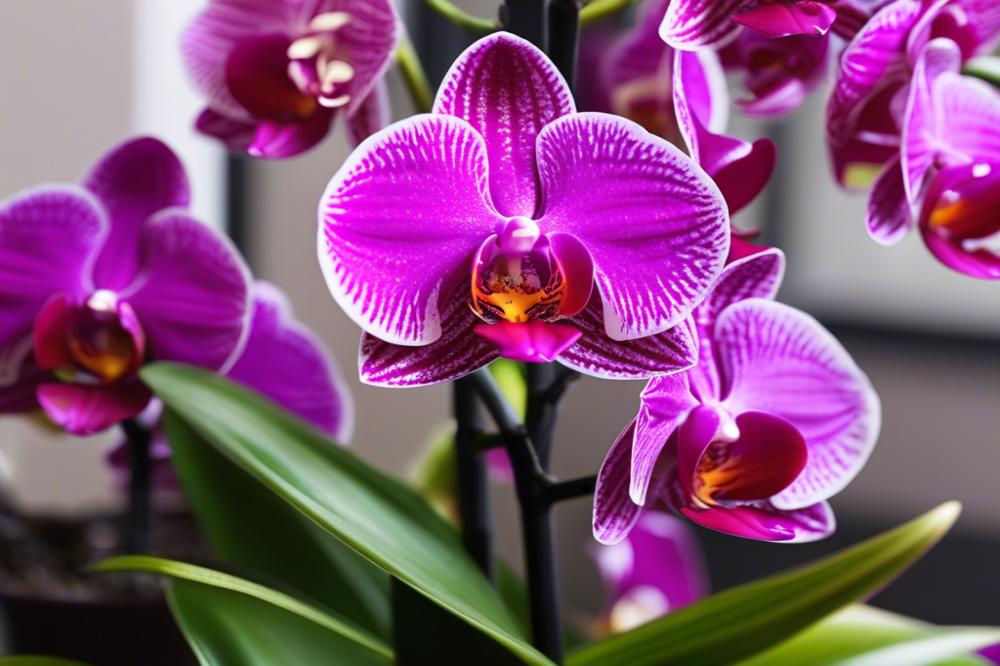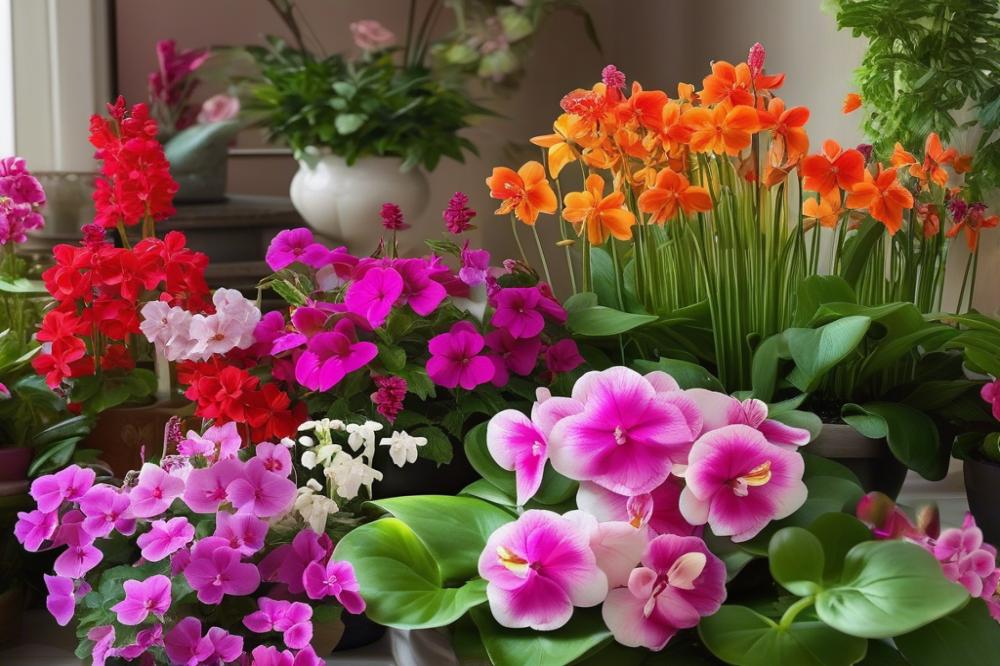The Importance of pruning orchids for healthy growth
Orchids are fascinating plants admired by many for their stunning beauty and diversity. Available in hundreds of species, these captivating blooms have gained immense popularity among gardeners and plant enthusiasts alike. Their exotic appearance can brighten any space, making them a favorite choice for homes and offices. However, maintaining their health is crucial for those looking to cultivate these delicate flowers.
One key aspect of orchid care is pruning. Properly pruning orchids plays a vital role in promoting healthy growth and vibrant flowers. Without regular maintenance, plants can suffer from stunted growth and reduced flower production. This practice not only helps control the size but also enhances the plant’s overall health. In addition, it aids in pest prevention, allowing the orchids to thrive in a more conducive environment.
The purpose of this article is to explore the various orchid pruning techniques that contribute to healthy growth. Understanding when and how to prune can significantly impact your orchid’s root system and flowering ability. Seasonal pruning is especially important as it aligns with the plant’s natural growth cycle. By diving into the specifics, we aim to equip you with valuable insights for successful orchid maintenance. Let’s discover how effective pruning can lead to flourishing orchids that bring joy and beauty to any space.
Understanding Pruning Orchids
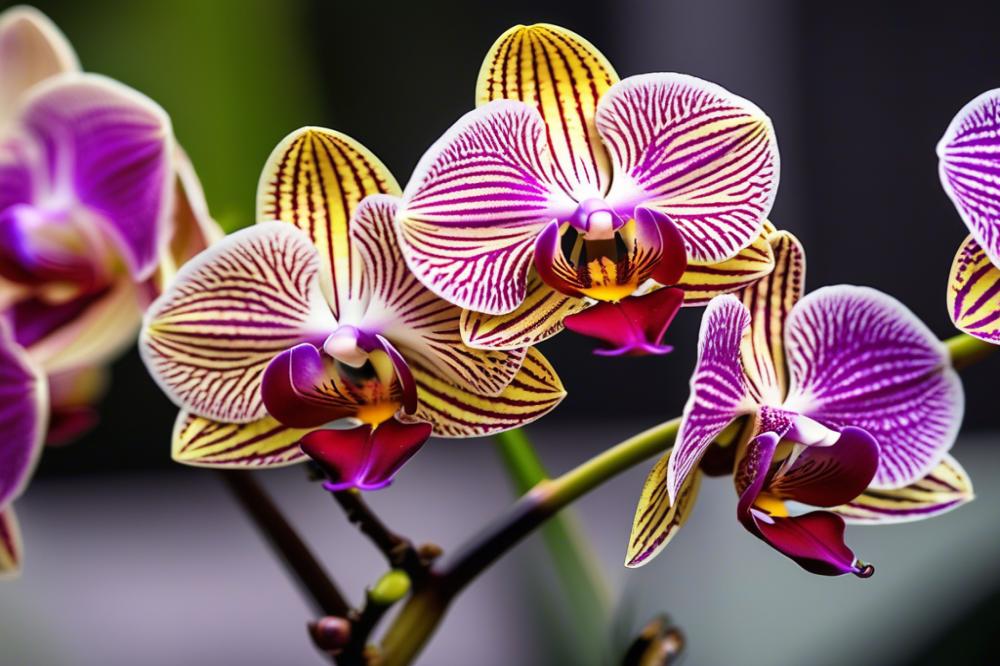

Orchid pruning refers to the careful cutting back of certain parts of your plant. The main purpose is to promote healthy growth and improve overall plant health. Regularly trimming back dead or unwanted stems can lead to more vigorous blooming and stronger roots. This process encourages new growth, which can enhance flower production throughout the seasons.
Healthy growth in orchids relies on removing old or sickly stems. When pruned correctly, a plant can redirect energy toward creating lush leaves and vibrant blooms. This focus on new growth can also prevent various issues, including pests or diseases, from taking hold. Just like any other plant, orchids benefit from a bit of attention and care, helping them thrive.
Different Orchid Types and Their Specific Pruning Needs
Not all orchids are created equal. Each species has its own specific demands when it comes to orchid maintenance. Some varieties, like Phalaenopsis, require minimal pruning, focusing mainly on spent flower spikes. In contrast, Cattleya orchids can thrive with more aggressive seasonal pruning. Understanding the unique needs provides growers with the tools they need to keep their plants flourishing.
During the growing season, regular checks on your orchids are essential. Seasonal pruning helps maintain a healthy root system and can support propagation efforts. By trimming the right parts, you create opportunities for your plant to develop fresh shoots. Always consider the specific characteristics of your orchid types, as their needs can vary significantly.
Besides aesthetics, effective orchid pruning techniques can improve plant health in the long run. Removing old leaves or spikes adds ventilation around the plant, making it less prone to pests. With consistent care, you can nurture these beautiful plants to reach their full potential. Remember that each cut can significantly impact your orchid’s future growth and blooming potential.
Orchid Pruning Techniques
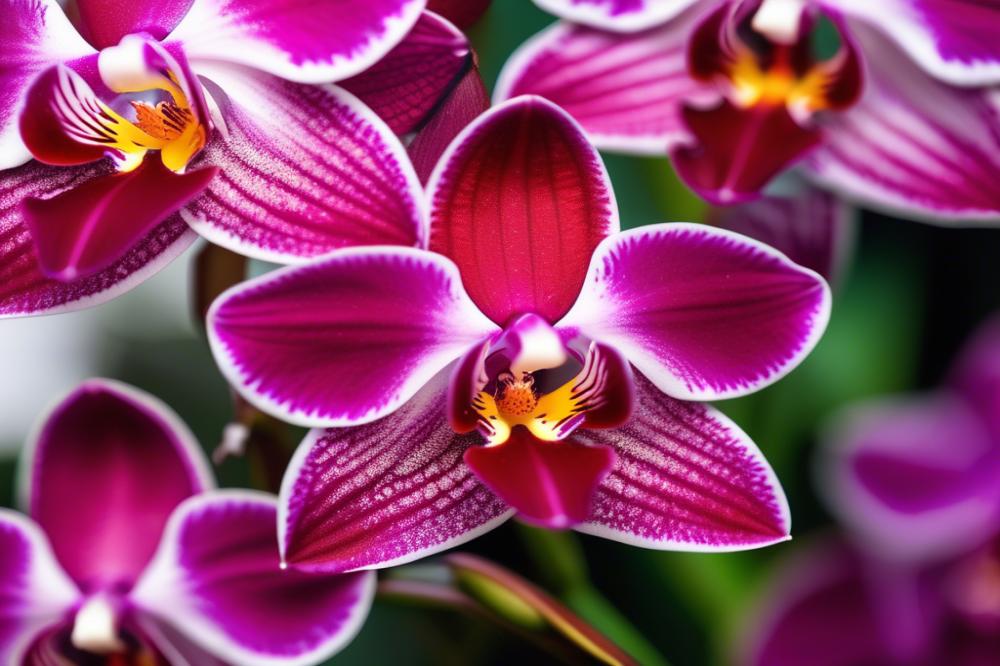

Overview of Effective Orchid Pruning Techniques
Pruning is vital for maintaining plant health. It encourages robust growth and can improve flower production. Different orchid types require various techniques. For example, Cattleya orchids might need different care compared to Phalaenopsis. Each species has its own characteristics. Understanding these can make a significant difference. This task also helps with pest prevention. Removing old or dead parts reduces the risk of infestations.
Timing of Pruning: Seasonal Pruning Considerations
Timing plays an important role in orchid maintenance. Most orchids benefit from seasonal pruning. Late winter to early spring is often ideal. At this time, many plants naturally enter a growth phase. Pruning at this moment can stimulate new growth and blooms. It’s essential to recognize individual characteristics of different orchids. Observing their growth cycles will inform when to prune.
Tools and Equipment Needed for Pruning Orchids
Having the right tools makes the process easier. Sharp, clean scissors or pruning shears are essential. Using specialized tools minimizes damage to the plant. A cutting tool should be sterilized to prevent infections. Gloves can protect your hands from sap and irritants. Collecting a small container for cuttings helps in disposal. Being prepared enhances efficiency and promotes better results.
Step-by-Step Guide to Pruning Orchids for Optimal Results
Begin by inspecting the plant carefully. Look for dead or yellow leaves; remove those first. Trim off spent flower spikes. Cutting them can encourage more growth. Next, address any damaged roots if accessible. Remove unhealthy parts gently, avoiding harm to healthy sections. Ensure the cuts are clean to avoid disease. Following this, clean up the surrounding area. Properly disposing of cuttings helps with pest prevention. Regularly pruning orchids develops a thriving root system, leading to bright flowers.
Benefits of Pruning for Healthy Growth
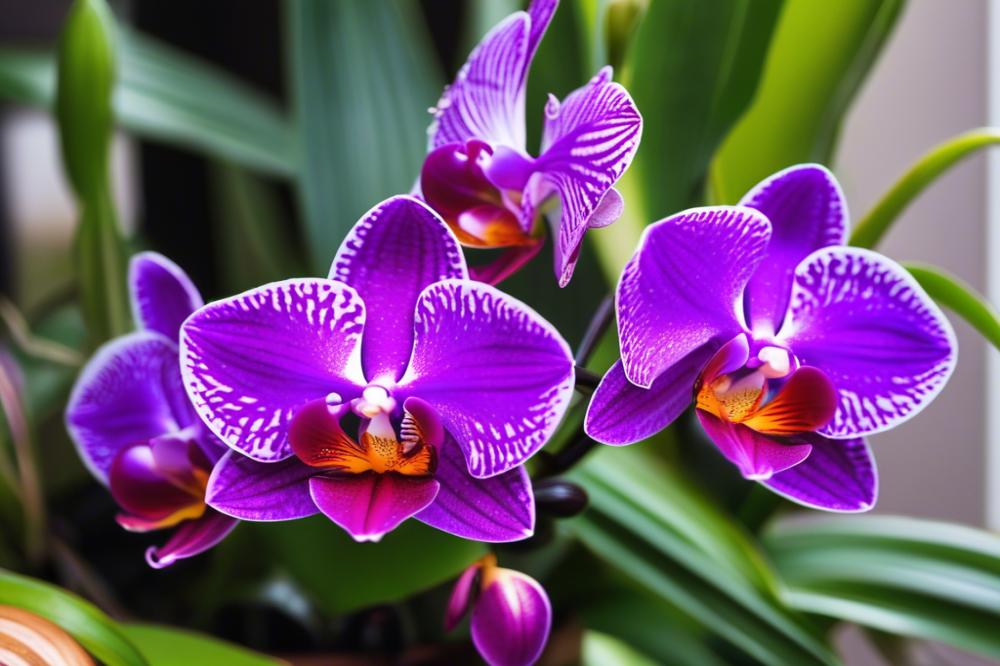

Pruning orchids plays a crucial role in their overall health and vitality. One significant advantage is its positive impact on flower production. By removing old or spent blooms, you encourage the plant to focus its energy on creating new flowers. This leads to more vibrant blooms and a longer flowering season.
Additionally, seasonal pruning can enhance plant health by reducing the risk of diseases. Dead or decaying plant material can attract fungi and pests. Taking the time to prune away these unhealthy parts creates a cleaner environment for the orchid. Healthier plants generally have a better chance of thriving and resisting illnesses.
Focusing on the root system also brings benefits. A strong root system supports the entire plant, allowing for better nutrient uptake and hydration. Regular orchid maintenance includes checking the roots and trimming them if needed. This promotes a balance that is essential for healthy growth across all orchid types.
Moreover, effective pest prevention and management are critical. Pruning helps remove segments of the plant that may harbor insects or disease. By staying proactive, a gardener can create an environment that discourages pests from taking hold. Orchid pruning techniques are not just about aesthetics; they play an important role in maintaining the plant’s well-being.
In the end, the practice of pruning is an investment in your plant’s future. Improved flower production, enhanced health, and robust roots all lead to a thriving orchid. Each cut made during pruning is a step towards ensuring that the plant remains strong and beautiful for years to come.
Maintaining Your Orchids Post-Pruning
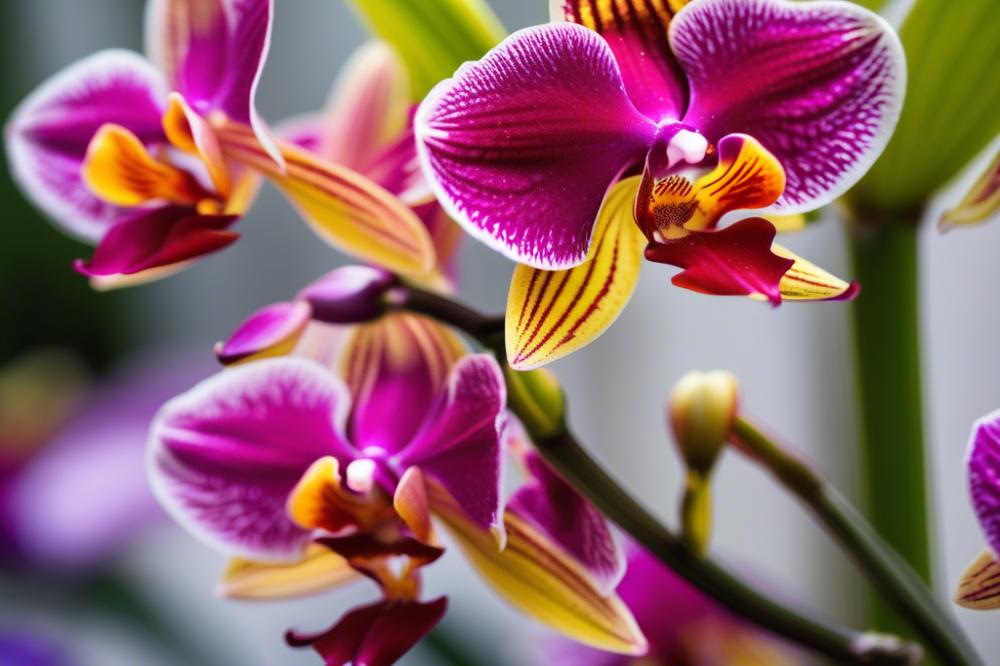

Orchid Maintenance Tips After Pruning
Caring for your orchids after pruning is crucial. Begin by inspecting the plant for any immediate signs of stress. Remove any dead or yellowing leaves that may have been missed. Applying a light mist of water can help hydrate the plant, especially if the pruning has left it exposed. Always check the potting media; it should remain airy and well-draining. Different orchid types may have unique requirements, so tailoring your approach can make a big difference.
Monitoring Plant Health and Adapting Care Routines
Pay close attention to your orchids in the weeks following pruning. Watch for changes in growth patterns and flower production. Are the leaves turning a rich green, or do they show signs of distress? Adjust care routines as necessary. If your orchid seems to droop, it may need more sunlight. Conversely, too much sun can scorch the leaves. Regularly check for pests, as stress can make plants more vulnerable to infestations. A quick inspection will help with early pest prevention.
Importance of Proper Watering and Fertilization Following Pruning
Watering practices should change slightly after the pruning process. It’s vital to allow the roots to breathe while providing adequate moisture. Overwatering can lead to root rot, which is detrimental to the plant’s development. Fertilization also plays a pivotal role in recovery. Use a diluted, balanced fertilizer to support healthy growth. This helps replenish nutrients lost during the pruning process. Seasonal pruning enhances the overall health of your orchids, making sure they remain vibrant and robust as they grow.
Propagation and Pruning: A Synergistic Relationship
Connecting orchid pruning to propagation strategies is essential for those who want vibrant and flourishing plants. Pruning not only promotes healthy growth but also plays a crucial role in how orchids reproduce. When you prune correctly, you create an environment that enhances plant health like never before.
Proper orchid pruning techniques can significantly boost your chances of successful propagation. By removing dead or unhealthy parts of the plant, you allow energy to focus on the healthier sections. This leads to healthier roots and better flower production. It also clears space for new growth, creating favorable conditions for propagation methods, such as division or keiki (baby orchid) formation.
Different orchid types showcase the benefits of coordinated pruning and propagation. For instance, Phalaenopsis orchids thrive when their spent blooms are cut back properly. This not only promotes new flower spikes but also prepares the plant for a potential division, allowing for new specimens. Oncidium orchids might benefit from seasonal pruning. Removing old stems can lead to a stronger root system, which is vital for their overall health and propagation success.
Pest prevention also ties into this relationship. By maintaining your orchids, you decrease the likelihood of infestations. Without pests, the plants can focus all their energy on thriving and reproducing. Understanding this synergy between orchid maintenance and propagation will help you achieve a garden filled with life and color.
Final Thoughts on Pruning for Healthy Growth
Pruning orchids is essential for promoting healthy growth. This practice helps plants focus their energy on new blooms and strong roots. As we’ve discussed, removing dead or yellowed leaves allows sunlight to reach the healthier parts of the plant. Eliminating spent flowers not only beautifies the orchid but encourages future flower production as well.
Implementing effective orchid pruning techniques can make a significant difference in your plants’ vitality. Regularly tending to your orchids will help you understand their needs better. Watch how they respond to different cuts and treatments. Adapting your care routine can lead to delightful results.
A thriving orchid collection requires commitment and good practices. With the right pruning techniques, you will encourage each plant to flourish like never before. Always be patient and observant. Every cut you make contributes to the overall health of your orchids. Soon, you’ll witness the rewards of your hard work and care.

